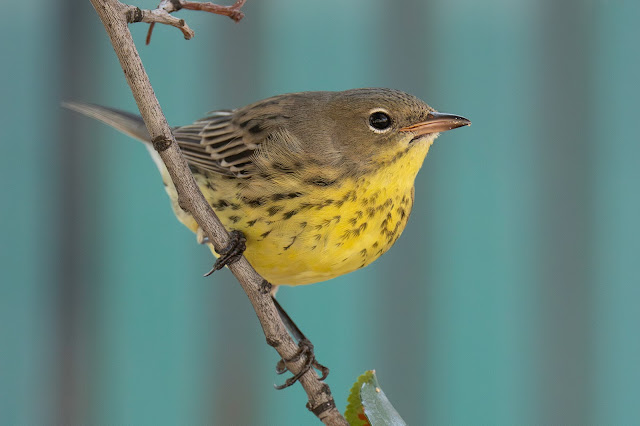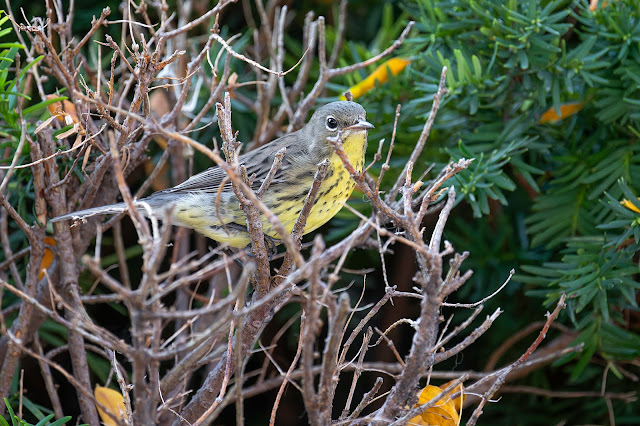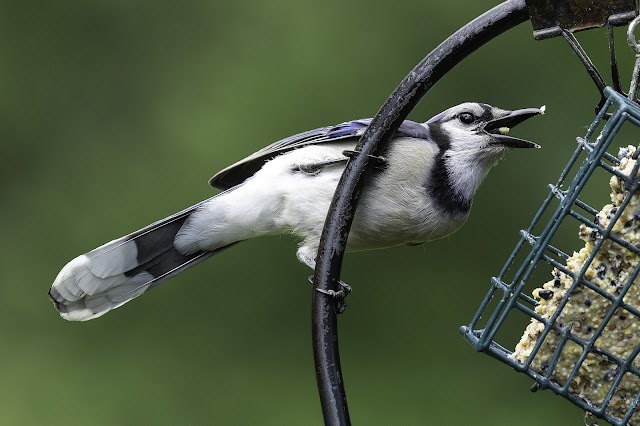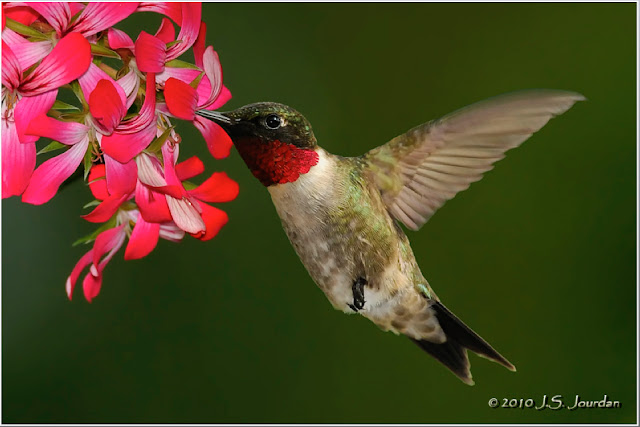Kirtland's Warbler in Detroit! - 03 Oct 2023
D'twelve in D'troit
Twelve Days in the same location is UNPRECEDENTED! First found by Emily Simon, in the Rose Garden on the median in front of the Detroit Athletic Club on 22 Sep 2023, a Kirtland's Warbler (Setophaga kirtlandii) continues to enthrall birders with its presence. Twelve days in a row now. This is a bird that is traditionally a 1-Day Wonder that is rarely ever seen two days in a row, let alone two weeks straight. This morning I was able to find and photograph it at the corner of Madison and John R in a Hawthorn tree with the help of Kyle Schanta (Thank You, Kyle!).
This Kirtland's Warbler sighting represents only the 9th Wayne County record and is the 1st Fall Record.
For those unfamiliar w/ the Kirtland's Warbler (https://birdsoftheworld.org/bow/species/kirwar/cur/introduction)
The Kirtland's Warbler (Setophaga kirtlandii), one of the rarest songbirds in North America, was first discovered when Charles Pease shot a migrant on 13 May 1851 on the farm of his father-in-law, Jared P. Kirtland, near Cleveland, OH. The new species was identified by Spencer Baird, who named it for the renowned Ohio naturalist (Baird 1852). The species' wintering grounds were discovered as additional specimens were collected from throughout the Bahamas, but it took 52 years before Norman Woods followed the lead of a graduate student from the University of Michigan and pursued the species along the Au Sable River in northeast Oscoda Co., MI, where he discovered the first nest of this elusive species in July 1903 (Wood 1904, Rapai 2012).
Throughout the first half of the twentieth century, the Kirtland's Warbler was studied by several of ornithology's finest naturalists, including L. Walkinshaw, J. Van Tyne, H. Mayfield and others, who shared details of the species' life history. Their work laid the foundation for recovery, as the species became the victim of its own habitat specificity, and the conservation movement sought to save declining species.
The 1971 decennial census confirmed the population crash that ornithologists had predicted (Mayfield 1972), documenting the decline in population size from estimates of 1000 individuals to around 400. The large areas of dry, sandy soil with dense stands of young jack pine (Pinus banksiana), upon which the species depended, had declined owing to fragmentation and fire suppression, but the most imminent threat was nest parasitism by the Brown-headed Cowbird (Molothrus ater, Mayfield 1960, Walkinshaw 1983).
Owing to its natural rarity and apparent decline, Kirtland's Warbler was included on the first list of endangered species in 1967 under the Endangered Species Conservation Act (Office of the Secretary 1967). Following the enactment of the Endangered Species Act in 1973, the Kirtland's Warbler Recovery Team was created, and they produced a recovery plan in 1976 (Byelich et al. 1976). The plan established a recovery goal of 1000 breeding pairs distributed across the original breeding range of the species, and the revised plan (Byelich et al. 1985) identified and prioritized recovery strategies to achieve this goal, including habitat management, cowbird control, annual monitoring, research, and education. In the late 1980's, the population began to respond to the recovery efforts, and by 2012 the population had reached about 4000 individuals.
Kirtland's Warblers are now considered biologically recovered, but the species is dependent on perpetual management to establish the early successional habitat it needs, and to remove the cowbird threat on that restricted landscape. In fact, all five recovery strategies must continue, making the species entirely conservation-reliant (Scott et al. 2010). The Kirtland's Warbler Recovery Team is attempting to develop a public/private conservation partnership to safeguard annual management of the species after removal from the protection of the Endangered Species Act (Bocetti et al. 2012). The species has been above the recovery goal of 1000 breeding pairs for more than a decade, and as long as management continues, its future appears secure. Efforts to secure this rare and unique species may provide a conservation model for other conservation-reliant species as well.
Emily Simon first reported the Kirtland's Warbler on Discord at 10:22 am on 22 September 2023. Within hours numerous birders had refound the bird near the rose garden and in the area near Grand Circus Park, Harmonie Park, and the corner of Madison & John R. I suspected that it would not stick around and would be unchaseable by day's end.
When it was refound on the 23rd I decided to drive down to look for it. But, with Saturday afternoon in Detroit the area was crowded with weddings, ball game, and normal park visitors. I found it too claustrophobic, so I didn't stick around. A few days later Robin and I were downtown so I thought I might try again. Nope, couldn't do it (the Detroit Tigers were celebrating Miguel Cabrera's last games before retirement) with the crowds. I had resigned myself to missing this sighting.
When Emily and Kyle continued to report the bird in the same area I decided I needed to try again. So, this morning I drove downtown at 8 am with the hopes of being able to look for it in the quiet of the early morning. Parking along the street across from the Detroit Athletic Club I found the city quiet and beautiful this warm, sunny morning.
As I locked the car I spotted a Common Yellowthroat in the bushes immediately to my left in the median. I followed it for a few minutes and soon found a small flock of White-crowned Sparrows, White-throated Sparrows, and a Lincoln's Sparrow.
I then headed to the corner of Madison and John R and found the Hawthorn tree that Jim Bull reported seeing the Kirtland's Warbler last evening. The area was quiet, so I checked out the rose garden in the median of Madison. Also quiet.
Walking back across the street I checked the tree again, then walked down to Grand River and circled around the block. Harmonie Park was quiet, but I found a Swamp Sparrow at the corner next to the parking lot.
Madison & John R - KIWA Hotspot, Wayne, Michigan, US
Oct 3, 2023 8:30 AM - 9:50 AM
Protocol: Traveling
1.0 mile(s)
Checklist Comments: Sunny, quiet, 70F
12 species
Rock Pigeon (Feral Pigeon) (Columba livia (Feral Pigeon)) 6
Mourning Dove (Zenaida macroura) 2
Yellow-bellied Sapsucker (Sphyrapicus varius) 1
Ruby-crowned Kinglet (Corthylio calendula) 2
European Starling (Sturnus vulgaris) 2
House Sparrow (Passer domesticus) 12
White-crowned Sparrow (Zonotrichia leucophrys) 6
White-throated Sparrow (Zonotrichia albicollis) 1
Lincoln's Sparrow (Melospiza lincolnii) 1
Swamp Sparrow (Melospiza georgiana) 1
Common Yellowthroat (Geothlypis trichas) 1
Kirtland's Warbler (Setophaga kirtlandii) 1 Continuing at corner of Madison and John R in the Hawthorne Tree and surrounding Yew bushes across from the Rose Garden in the median of the Detroit Athletic Club. Shout-out to Kyle Schanta for locating the bird for me, Karen Markey and Juliet Berger. Female; gray warbler w/ yellow chest and black streaks on flanks and neck, white eye-arcs. Photos.
View this checklist online at https://ebird.org/checklist/S1
This report was generated automatically by eBird v3 (https://ebird.org/home)






















































Comments
Post a Comment
Please leave a comment. I will try to respond ASAP.